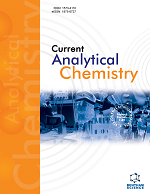
Full text loading...
The subject of medical and biological research using nanotechnology, which blends nanoscience with biology and biomedicine, is currently gaining a lot of attention. Nanomaterials come in a wide range of sizes, shapes, and compositions and are widely used in various applications. Their stimulating potentials mainly enhance our capacity to identify naturally occurring processes.
Moreover, point-of-care (POC) methods offer quick and easy medication analysis at home, in a physician's office, or anywhere else. The pregnancy test and the blood glucose test are the two most well-known examples. From a more global standpoint, they offer the enticing prospect of saving lives from incurable illnesses: their rapid, sometimes instantaneous data significantly minimize analysis times, and their more economical variants make them accessible to healthcare facilities, individuals worldwide, and even in developing countries. Determining biomarkers in disease analysis, such as enzymes, proteins, circulating tumor cells, tiny compounds, and DNA/RNA in biological examples, including full serum, blood, saliva, plasma, fluid, cerebral spinal, and urine, may also be included in applications.
Globally, cardiovascular diseases (CVDs) are the primary cause of death. Finding cardiac biomarkers is crucial for the diagnosis, management, and prevention of cardiovascular diseases. By giving vital information about a patient's cardiac health, these indications help doctors make the best decisions and give the best care. The efficiency, promptness, and patient-centeredness of cardiac treatment are significantly enhanced by POC methods for cardiac biomarker identification, which improves patient outcomes and healthcare delivery. For this reason, the primary emphasis of this investigation was on POC instruments and sensors that are now available commercially and have been published within the previous five years for the assessment of cardiac biomarkers. We discuss the POC devices that have been developed recently using a variety of cutting-edge technologies, sophisticated materials, and analytical methods.
The current study also includes an overview of several companies and the products they sell for cardiac function monitoring and rapid, precise heart failure diagnosis. Ultimately, important conclusions are reached about POC devices for medical applications, namely for CVDs. The global market values and potential directions for POC device development are also taken into consideration.

Article metrics loading...

Full text loading...
References


Data & Media loading...

